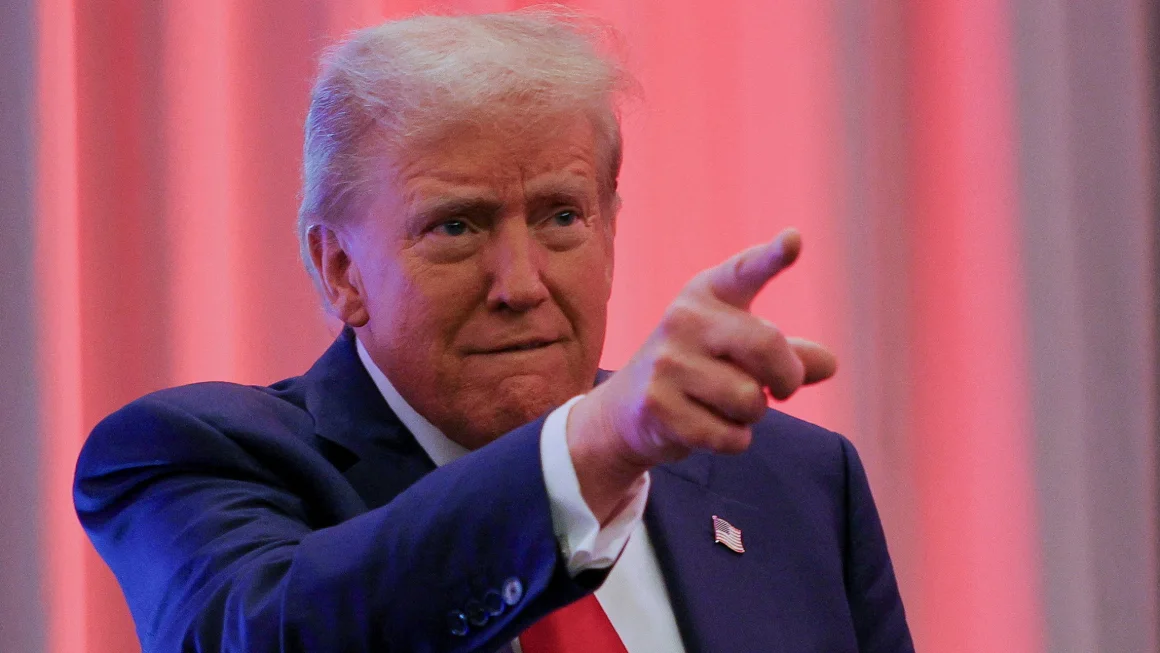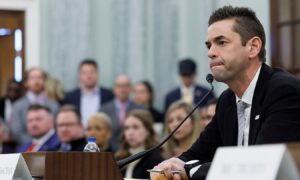The incoming Trump administration’s preparations to enforce stringent border controls, repeal Biden-era policy, and begin large-scale detention and deportation of migrants are underway and beginning to take shape, according to four sources familiar with the plans.
President-elect Donald Trump has made immigration a central theme of his 2024 presidential campaign; however, unlike his first campaign, which was largely focused on building a border wall, he has shifted his focus to interior enforcement and the removal of undocumented immigrants already in the country.
People close to the president and his associates are preparing the basis for increasing detention facilities to meet his mass deportation campaign vow, including a survey of urban regions with available capacity. However, they are also preparing executive moves that are a throwback to his first time in office and might be implemented as soon as Trump takes office, insiders said.
Taken together, it represents the return of strict immigration policies that drew fierce criticism from Democrats and immigrant groups during Trump’s first term, as well as a significant shift for migrants and immigrants in the United States.
According to two sources briefed on transition policy discussions, the executive actions and reviews underway include the return of the program informally known as “remain in Mexico,” which requires migrants to stay in Mexico during their immigration proceedings in the US, revising asylum restrictions, revoking protections for migrants covered by Biden’s humanitarian parole programs, and undoing ICE’s enforcement priorities.
Another executive order under consideration would make detention mandatory and stop the practice of releasing migrants across administrations due to inadequate federal resources. According to reports, such an executive order would pave the way for widespread detention and deportation.
According to two sources, Trump’s staff is also examining regional capacity for migrant accommodation, which could lead to the development of new detention centers in larger urban regions. Homeland Security authorities have previously identified a number of places where jail capacity can be expanded in preparation for border surges.
Plans also call for the reinstatement of family detention, which has been strongly condemned by immigrant advocates and was abolished by President Joe Biden.
“The American people re-elected President Trump by a large margin, giving him a mandate to carry out the promises he made during the campaign. “He will deliver,” Trump-Vance transition spokeswoman Karoline Leavitt told AWN in a statement.
However, money is the most important aspect of any plan. In the absence of extra congressional financing, those working on the plans have proposed reprogramming agency monies to shore up resources, as past administrations have done.
However, they are also considering a potential national emergency declaration to unlock Pentagon resources, as was done during Trump’s first term and resulted in lawsuits, and modifying that declaration to clear the way for increased detention capacity, according to one source.
The private sector, which the federal government mainly relies on for jail space, is likewise planning to add extra beds. In a recent earnings call, CoreCivic CEO Damon Hininger mentioned the rising demand for detention space. CoreCivic is among the major private jail operators in the United States.
“We believe that the outcome of this election will be significant for ICE for a variety of reasons. “One is that we believe there will be an increased demand for detention capacity,” Hininger told investors.
The federal government also interacts with county jails, and the Trump administration is expected to use them to find more space for undocumented immigrants.
The team in charge of carrying that out has been assembled, including veteran immigration official Tom Homan as “border czar,” immigration hardliner Stephen Miller as deputy chief of staff for policy, and loyalist South Dakota Gov. Kristi Noem as head of the Department of Homeland Security.
Miller has previously discussed plans for huge staging facilities near the border to imprison and deport migrants, as well as worksite raids, which the Biden administration phased up in 2021.
According to two individuals, other border security officials are engaging in negotiations behind the scenes, including former US Border Patrol Chief Rodney Scott and Michael Banks, a special assistant to Texas Gov. Greg Abbott on the border.
The persons who are developing operational plans are well-versed in the immigration system, particularly Homan, who was also the architect of family separation. He has consistently stated that operations will be targeted and centered on public safety and national security issues.
Current and former Homeland Security officials have privately stated that Homan’s nomination demonstrates the Trump administration’s seriousness toward immigration enforcement. He also had a prominent position at Immigration and Customs Enforcement amid the Obama administration’s record number of deportations.
“(In the) first few days, you’ll see executive orders issued to halt the flow (of migrants) and impact the flow that’s coming at that moment. The immediate focus is on who is already present, according to a source familiar with the plans. “Those are the first two things prioritized in the first few days.”
During his first term, Trump deported more than 1.5 million people, according to Kathleen Bush-Joseph, a policy analyst at the Migration Policy Institute. However, this is almost half of the 2.9 million deportations carried out during Barack Obama’s first term and less than the 1.9 million carried out during Obama’s second term.
These estimates exclude the millions of immigrants who were turned away at the border as a result of Trump’s Covid-era policy, which was in effect for the majority of Biden’s term.
“What he’s trying to accomplish is really complex,” a former government official told AWN of Homan.









